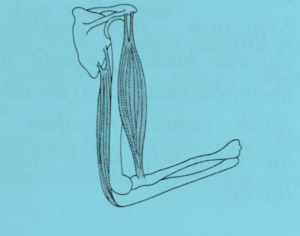Diagram I and Diagram II show different positions of a forearm during a movement.

(a) Complete Diagram I by drawing the triceps muscle which is involved in the movement of the forearm.
(b) State one adaptive characteristic of tissue R shown in Diagram I which helps in the movement of the forearm.
(c) Explain the action of the muscles which cause the movement of the forearm in Diagram II.
(d) Diagram III shows a joint at the knee.

Explain the health problem normally faced by an old person when tissue P is impaired.
(e) An athlete must do a warming up exercise before starting an event.
Explain why.
Answer:
(a)

(b)
Strong/ tough/ non-elastic tissue
(c)
When the biceps relaxes and the triceps contracts, the radius and ulna are pulled downwards and the forearm is straightened.
(d)
– An old person will suffer from osteoarthritis.
– The wear and tear of the cartilage is due to ageing.
– The repetitive use of the joints over the years irritates and inflames the cartilage.
– Eventually, the cartilage begins to degenerate and this causes friction between the bones, leading to pain and restriction of joint mobility.
(e)
– Warming up exercise is needed so that the heart rate increases. This enables oxygen in the blood to travel faster. The capillaries dilate and let more oxygen travel in the blood.
– Warming up exercise also increases the temperature in the muscles. It loosens up the muscles and joints. This removes lactic acid, lets the muscle fibres have greater extensibility and elasticity and increases the force and contraction of the muscles.